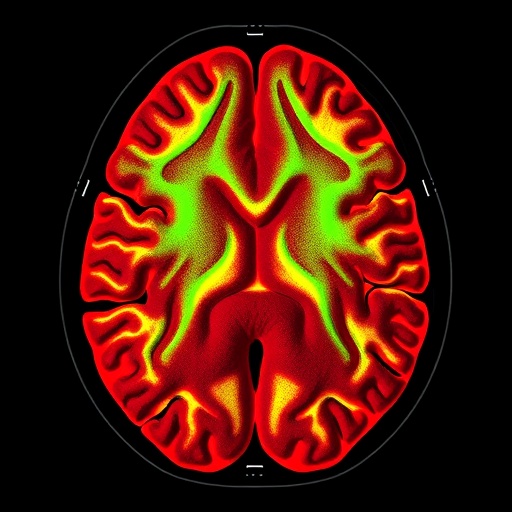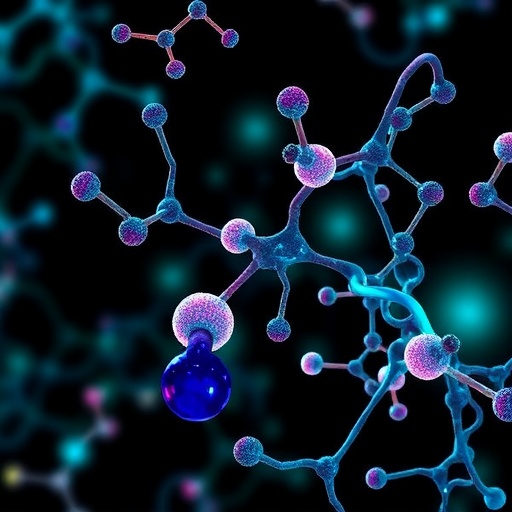A new analysis of data from more than 10,000 adults shows that people who were physically active had higher pain tolerance than those who were sedentary, and that those with a higher level of activity had a higher level of pain tolerance. Anders Årnes of the University Hospital of North Norway, Tromsø, and colleagues present these findings in the open-access journal PLOS ONE on May 24, 2023.

Credit: Phil Roeder, Flikr, CC-BY 2.0 (https://creativecommons.org/licenses/by/2.0/)
A new analysis of data from more than 10,000 adults shows that people who were physically active had higher pain tolerance than those who were sedentary, and that those with a higher level of activity had a higher level of pain tolerance. Anders Årnes of the University Hospital of North Norway, Tromsø, and colleagues present these findings in the open-access journal PLOS ONE on May 24, 2023.
Prior research has suggested the possibility that a habit of engaging in a higher level of physical activity might help ease or prevent chronic pain by boosting pain tolerance. However, most studies on this topic have been small or focused on narrow groups of people.
To help clarify the relationship between physical activity and pain tolerance, Årnes and colleagues analyzed data from 10,732 Norwegian adults who participated in a large population survey study—the Tromsø Study—that is conducted periodically in Norway. The researchers used data from two rounds of the Tromsø Study, one conducted from 2007 to 2008 and the other from 2015 to 2016. The data included participants’ self-reported levels of physical activity and their levels of pain tolerance, as evaluated in a test involving submersing their hand in cold water.
Statistical analysis of the data showed that participants who reported being physically active in either round of the Tromsø Study had higher pain tolerance than those who reported a sedentary lifestyle in both rounds. Participants with higher total activity levels had higher pain tolerance, and those who had higher activity in 2015/2016 than in 2007/2008 had a higher overall level of pain tolerance.
The analysis did not show a statistically significant relationship between activity level and changes in pain tolerance between the two rounds of the study. Nonetheless, it suggests that remaining physically active, becoming active, or boosting activity is linked to higher pain tolerance.
On the basis of their findings, the researchers suggest that boosting physical activity could be a potential strategy for easing or staving off chronic pain. Future research could help confirm whether there is indeed a cause-and-effect relationship between activity and pain tolerance and evaluate potential therapeutic applications.
The authors add: “Becoming or staying physically active over time can benefit your pain tolerance. Whatever you do, the most important thing is that you do something!”
#####
In your coverage please use this URL to provide access to the freely available article in PLOS ONE: https://journals.plos.org/plosone/article?id=10.1371/journal.pone.0285041
Citation: Årnes AP, Nielsen CS, Stubhaug A, Fjeld MK, Johansen A, Morseth B, et al. (2023) Longitudinal relationships between habitual physical activity and pain tolerance in the general population. PLoS ONE 18(5): e0285041. https://doi.org/10.1371/journal.pone.0285041
Author Countries: Norway
Funding: APÅ was funded by a grant from the Northern Norway Regional Health Authority (grant number HNF1352-17). www.helse-nord.no. The funders had no role in study design, data collection and analysis, decision to publish, or preparation of the manuscript.
Journal
PLoS ONE
DOI
10.1371/journal.pone.0285041
Method of Research
Survey
Subject of Research
People
Article Title
Longitudinal relationships between habitual physical activity and pain tolerance in the general population
Article Publication Date
24-May-2023
COI Statement
The authors have declared that no competing interests exist.




